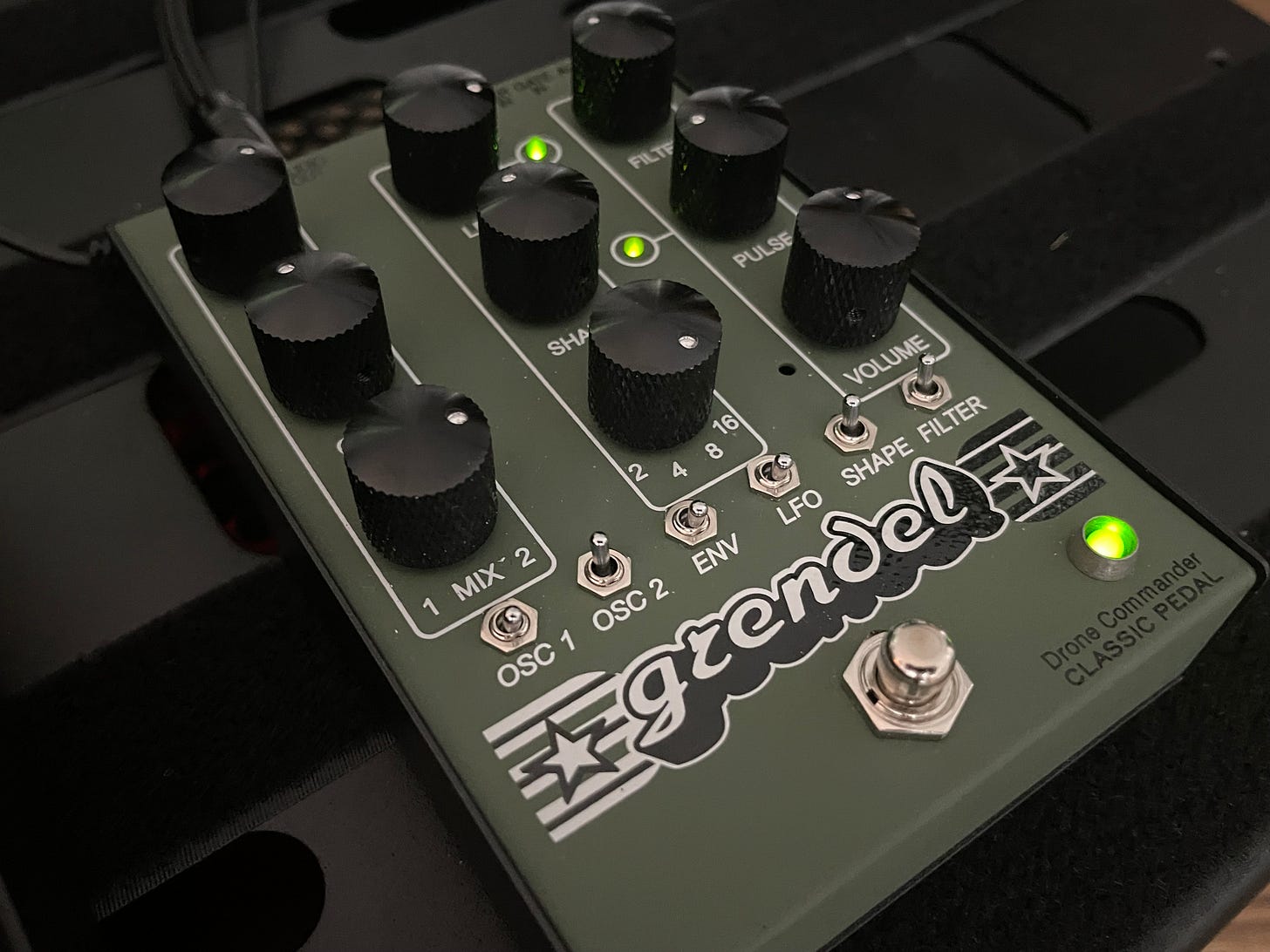One of the problems I find with my electronic/synth music is that because of the more-constant rhythm and lack of expression typically found in “regular” instruments, it’s difficult for me to make songs sound interesting for longer periods of time. I typically keep adding tracks until things sound like a wall of sound and then on playback, it’s hard to tell what the song was trying to do. Any sense of musical evolution or purpose to the track is easily lost.
Keeping things minimal is a challenge for me because repetition is (seemingly) key to the genre, and my usual trap is to vary pitch/melody or stack elements so much that they lose this essence. Yet more minimal music is what I want to make.
On a recent plane trip I dissected a few old tracks from some prominent artists and came to some conclusions. Melody doesn’t need to vary much at all. What may happen instead is different sections of the song may use different rhtymic elements and those may very slowly evolve, and there are regular interjections of sounds, vocal snippets, and sound effects. Introducing new melodic tracks and elements should probably not happen very much at all.
So, what do you do about non-melodic effects, especially if you don’t want to sing yourself or go out and do field-recordings of piranha frogs? The most cliched sound effects in electronic music are long sweeping risers, filter sweeps, and effects like Endless Smile. Creating your own risers and effects in software is quite doable, but is somewhat less than fun, and I definitely don’t want to preset surf. After all, what is music really but a collection of the choices you make expressing not really quality or skill, but just you? So, I wanted to be unique and make some noises myself.
I ended up selling most of my guitar pedals I was experimenting with to try out three different drone synths. Here they are!
Soma Labratory Lyra-8
This is an exceptionally cool design where there are eight voices, independently triggerable by closing the switches at the bottom with your fingers. They are all tunable and the various oscillators and LFOs can cross-modulate in a lot of exceptionally weird ways, giving this a nice range between haunting choir-esque drones and pulsating staticey noise with the drive and feedback circuits engaged.
The Moffenzeef Stargazer
I should have probably got the black-on-white version for legibility, but this is a really cool design.
Here, there are two oscillators that are not individually tunable in the default firmware, but can be offset by a detune knob. Each oscillator uses a common digital wavetable for some immediate edgy texture, and has a filter that is modulated by it’s own wavetable LFOs. On top of that there’s some gain/overdrive and sample rate reduction controls, and another wavetable LFO to modulate the volume. The wavetable itself does not modulate, which would have been nice to see, and is maybe possible in the alternative open-source firmware versions. While the other devices in this blog are analog, this unit is powered by a Teensy chip.
The Grendel Drone Commander
The Grendel has been around for some time, originally in very attractive ammo-box versions, and I previously had a modular version that I killed in some sort of power supply accident. Both oscillators are individually tunable and can be square waves or saws, and the filter when dialed in can take the device from haunting to very growly and raspy. It can get fairly rhythmic as well. My only wish is to imagine a Beowulf Cluster of these, but that’s what multi-tracking is for anyway.
No Shootout, Just A Short Test Track
There are no winners and losers here, you could easily use all three of these at the same time.
Some of these have particular strong points, but this is just my take I guess - The Lyra-8 is nice to improv some added sound effects on top of a track. The Stargazer is most apt to provide new ideas with quick turns of the dial due to all of the different wavetables. And the Grendel is probably the best for live slow tweaking for more traditional drone-type performances.
The challenges here are that the synths themselves may be a bit mid-rangey, or may need EQ to allow other instruments in the tracks to sound out, but that’s a audio production problem not a problem with these instruments themselves. They also seem to all react very well to software effects, in places where I might not apply effects to more transient elements (like synth bass), I can see throwing some phasers and flangers and other things in the effects chain and slowly modulating them. They get particularly edgy when run through an amp sim or a bitcrusher. There may be a bit of a challenge in that these may tend to produce relatively ‘dark’ or ‘industrial’ tracks, but I’m ok with that.
I’m hoping to use these to kind of provide some interesting ambience underneath some tracks, as well as for some intros and fills and such. We’ll see where it goes.
In the track below, I’ve got two clips from Stargazer, then two from the Grendel, and then two sections from the Lyra-8. These aren’t particularly long clips or even good demos, really. I also didn’t really live-play the Lyra-8 and am mostly using the “hold” feature to leave the oscillators locked down. Since all of these have a lot of possible textures to create, I can’t even say this is representative of what is possible, but more so that all of these can kind of hit some nice territory.
I added a tiny bit of reverb (Cinematic Rooms at about 15-20% wet) and some compression/limiting on the recording, but that’s it.





